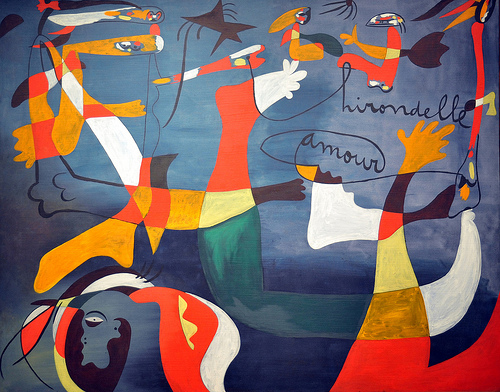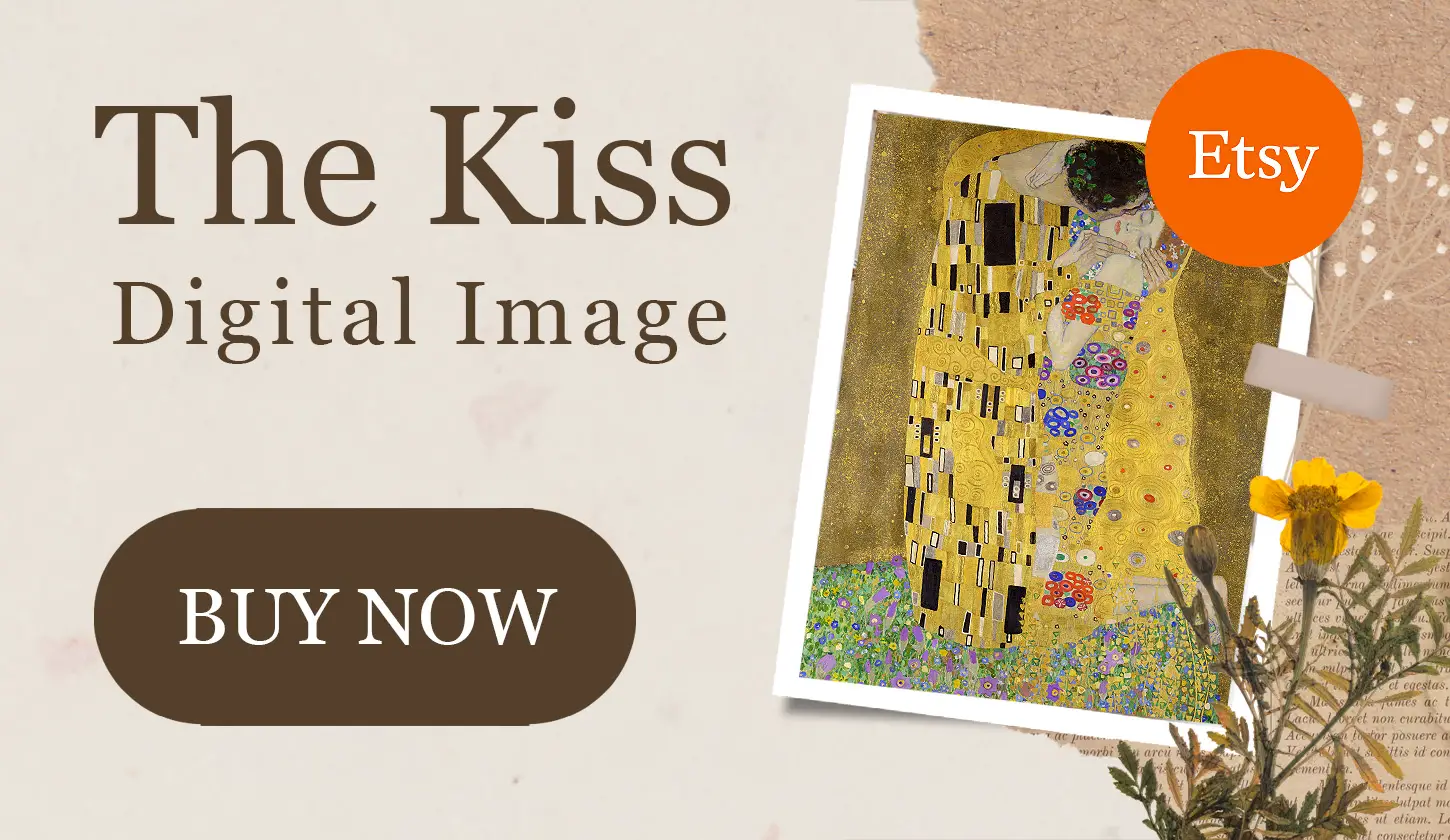Joan Miró was a famous Spanish Catalan artist from Barcelona who produced surrealist and abstract designs across painting, sculpture and ceramics through the majority of the 20th century. This biography outlines his career development and the factors which inspired his imaginative creations across multiple mediums.
Early Life and Career
Miro was introduced to the arts from a very young age and was always going to be encouraged by his parents to at least hold an interest in the more cultural sides of his Catalan heritage. The artist gained his first education in the arts at the School of Industrial and Fine Arts, where he was taught by Modest Urgell and Josep Pascó up until he turned 18. Francesc Galí's School of Art then further honed his talents after a bout of illness. It was that low period which re-affirmed Miro's desire to concentrate on painting as the main focus in his life. Miro went onto study at La Lonja School of Fine Arts in Barcelona, before unveiling his first exhibition at the Dalmau Galleries in 1918.
At this stage in his life, Miro was experimenting much more than he did in later life, making use of all manner of different influences at that time, almost like a kid in a sweetshop, wanting to enjoy anything and everything that modern art had to offer. Miro's work was characterised by the bright colours of Fauvism, abstract ideas of cubism, plus traditional ideas from Catalan art and frescos from European churches of past centuries. This was entirely normal for any budding artist who was full of passion and enthusiasm and yet to determine a consistent path for their careers. Exploration and experimentation were the main drivers to his work at this early stage but these journeys were essential to him later finding his preferred route.
The early 1920s marked an important time in Miro's career as he moved to Paris (partly due to the poor performance of his first exhibition in Barcelona) and started to develop new ideas and new friendships. Whilst eager to retain his independance, he enjoyed sharing thoughts with like minded artists. It was here that he would start to be exposed to the likes of Salvador Dali and Pablo Picasso. This was a marked contrast from his earlier influences of artists like Vincent van Gogh and Paul Cezanne. Future years were to be varied again with mixed media used, as well as some significant sculptures. Engraving, lithography, water colors, pastels, and painting over copper all came to the attention of Miro. Miro used his final years as an artist to concentrate on large, impactful sculptures which came possible because of his reputation that had been built in the preceding decades.
Mature Period
After a short time living in Paris the artist settled into an annual routine of remaining in the city during Autumn, Winter and Spring and then returning to the family farm in Montroig every summer. This seemed to provide him with a balance of influences and also allowed his mind to rest from the hectic city life for several months each year, whilst retaining his connections within the capital that ensured his career could develop at a pace. As with most young artists when they first move into a large city, Miro was financially stretched during the earliest years but seemed to find inspiration from his hardship for his work. He produced large numbers of drawings during this time, some of which would later be used as the basis for abstract paintings. Miro was not concerned by these difficulties, instead appreciating his opportunity to pursue his artistic dreams in a location which would be more receptive to his modern art styles.
It did not take long before Miro was well connected with other forward-thinking artists within Paris, particularly from within the Surrealist and Dada movements. He felt at home. Andre Breton was to become a close friend and also a keen backer of his work. This general collection of modern artists would also start to produce publications which drew together much of their work and also the theories lying behind some of their creations. When one publication would disappear after a few years, inevitably another would appear soone after. Miro himself designed some covers for these from time to time as well as producing articles too. After several exhibitions of his work in the city he would then contribute to an overall Surrealist exhibition too, though remained somewhat on the fringes of this group. Harlequin's Carnival arrived in 1924-1925 and this was to be one of his more significant paintings. During this period Miro would produce several different experimental series at the same time, often studying ideas before later putting them into practice. On some occasions he would wait until he returned to the countryside before commencing the paintings themselves.
By the late 1920s Miro was starting to achieve genuine success for the first time and even began building a solid reputation in the United States. Whilst still unable to attract buyers from his native Spain he was selling artwork to the French and American markets. Sadly this period of hope was soon dashed by the economic crisis which engulfed most of the western world for several decades, forcing his family to return to Spain. This then combined with the Spanish Civil War to leave great uncertainty in their lives for a number of years. It even impacted Gaudi's career, even though he had passed away years earlier, due to the destruction of many of his drawings for the Sagrada Familia. At the same time the likes of Klee, Macke, Marc and Kirchner were being persecuted by the Third Reich in Germany due to their modern style of art. These difficulties would also impact Miro's work, forcing him into his Constellation series due to a lack of alternative options. It would later prove to be one of his most important periods of art, despite these considerable challenges.
With a greater insecurity in Europe continuing into the 1940s, America would provide much of the comfort that Miro needed, financial support and continued interest in his work. MoMA organised his very first retrospective which raised his reputation to a new level and large commissions across the country would soon follow. The remaining years of his career were spent with continued experimentation, taking in large amounts of sculpture and ceramics which would again reinvent Miro in a different light. He seemed capable of moving from one discipline to another relatively seamlessly, such was his passion and natural talent for embracing all manner of different techniques. Miro continued to take on high profile commissions for the rest of his life, and also took part in a notable exhibition in 1959, titled Homage to Surrealism. He would also reinvent some of his artworks from the past in new ways which summarised some of the developments that he had made over the past few decades, even though the core elements of his overall artistic style had not changed that much.
Later Years
The final years of Miro's career saw him reach the pinnacle of international recognition. He was now able to cherry pick from all commissions offered, tending to go for the most impactful. These included a tapestry for New York's World Trade Center as well as a large sculpture to be displayed in the open air of Barcelona, a city which remained so important to him. By this stage, though, he was truly recognised as a culturally significant artist on the global stage and particularly influentual to the development and acceptance of many strands of modern art. Even by this stage Miro was continuing to embrace modern society, always interested in the lives of the youngest generations to see what the future held. Like all the great artists of this period, he would continue to work until his death, never losing the spark of creativity nor his passion.
Legacy
Joan Miro produced a very personal form of abstract art that was to influence a number of modern artists that followed on shortly after. Abstract Expressionists such as Jackson Pollock as well as Colour Field painters like Mark Rothko and Barnett Newman would make use of his advancements in their own careers. Having passed away as recently as 1983, his artwork still feels relatively fresh and will no-doubt inspire others in the near future. His passion for multiple disciplines also helps to open young artists' minds as to what they could get involved in, going beyond just the standard fare of oil painting. Additionally, he left another highly significant addition to the impressive back catalogue of work to have come from the Catalan region, marking him out alongside other greats such as Salvador Dali and the architect Antoni Gaudi.
The artist was also passionate about modern art, claiming to have declared war on traditional art. This helped to lay the foundations for those who followed, encouraging them to pursue these new ideas and techniques and not to be dissuaded by those who considered it to be without any artistic merit. This was important as voices against modern art remained strong in some quarters, particularly in Europe, right up until around the 1960s. The present day is far more open minded and forgiving about different ideas, allowing them to co-exist, if not always in the same galleries. Whilst his original pieces are spread all across the world, the two main locations to view some of his most famous artworks would be MoMA and Fundació Joan Miró, with the artist having gifted a number of items to both in his later years.
This famous Catalan would set up a foundation which opened in 1975 and aimed to make a better use of the huge output of work that existed from his career and allow more people to enjoy it. There was also a conscious effort to provide assistance to young artists who needed financial or technical support in the early stages of their careers. The Fundació Joan Miró eventually built strong links with some of the other major art institutions around the world and has even sold off some elements of its collection in order to fund other establishments. Miro was not involved in architecture and so requested help from Josep Lluís Sert in order to construct a building best suited to the artwork that would be housed within it. It can be found in the Parc de Montjuïc in Barcelona and adds an extra dimension to the cultural offering of this vibrant, modern city.





